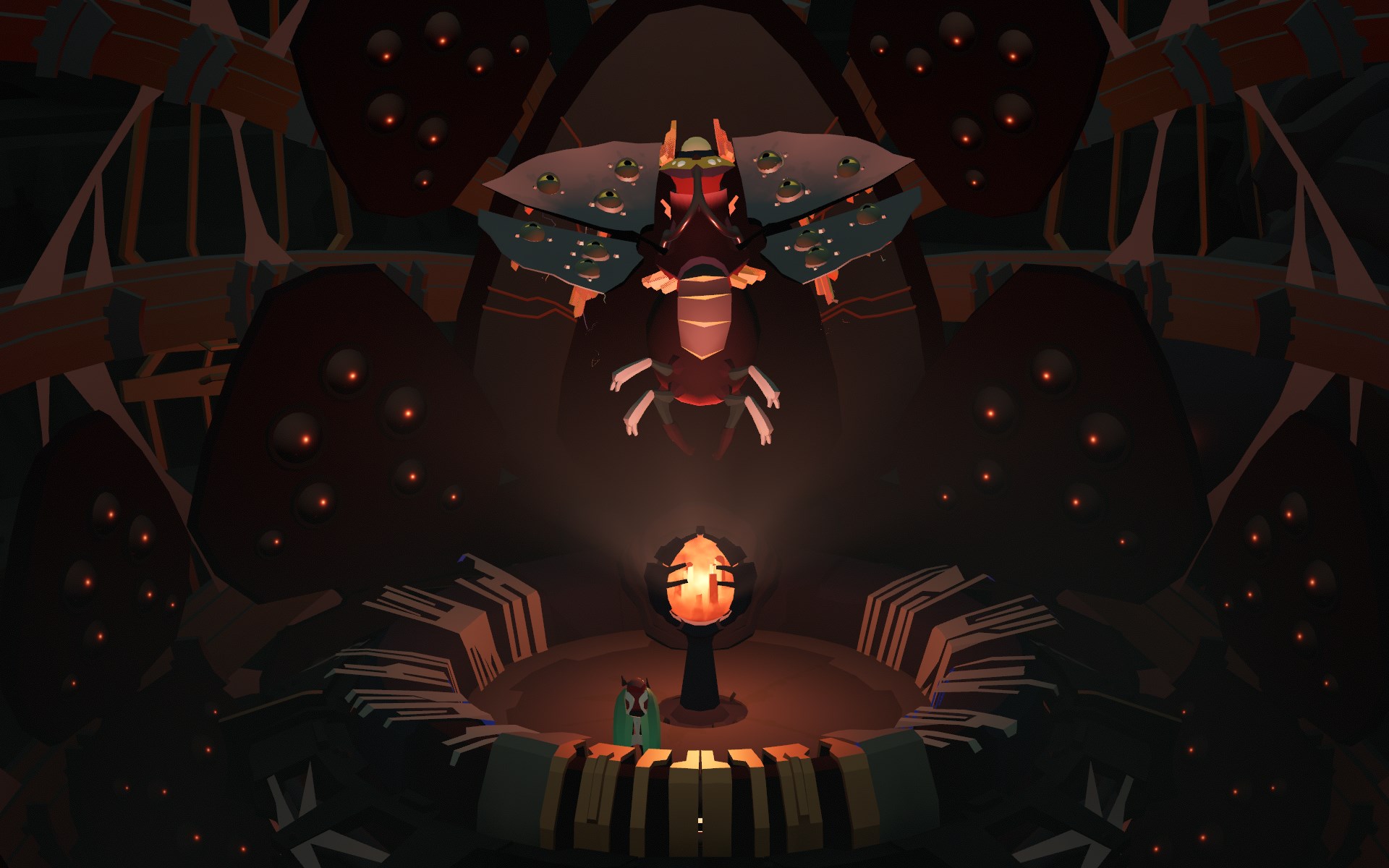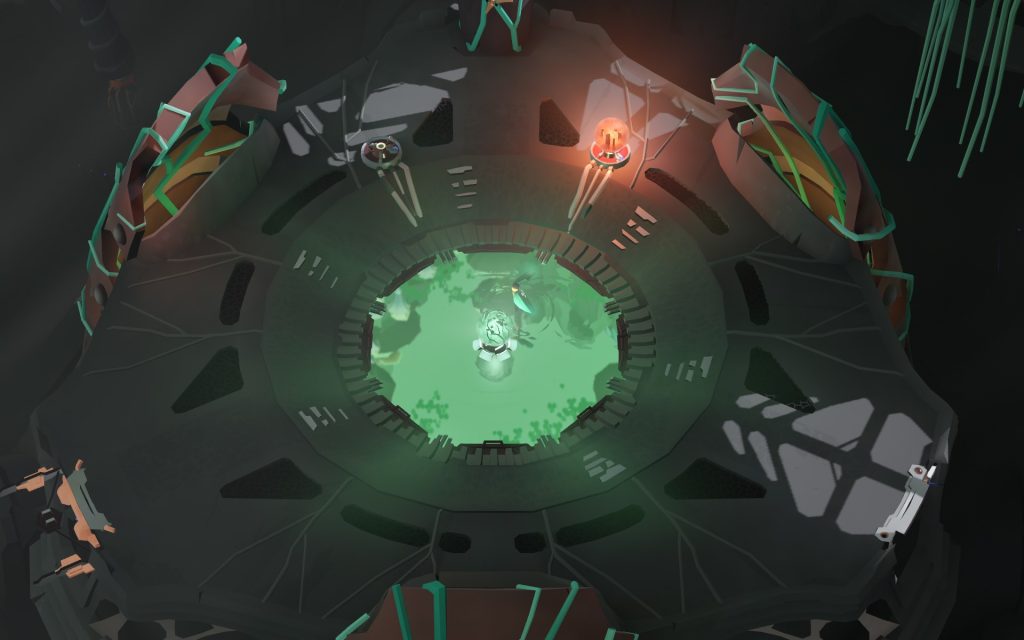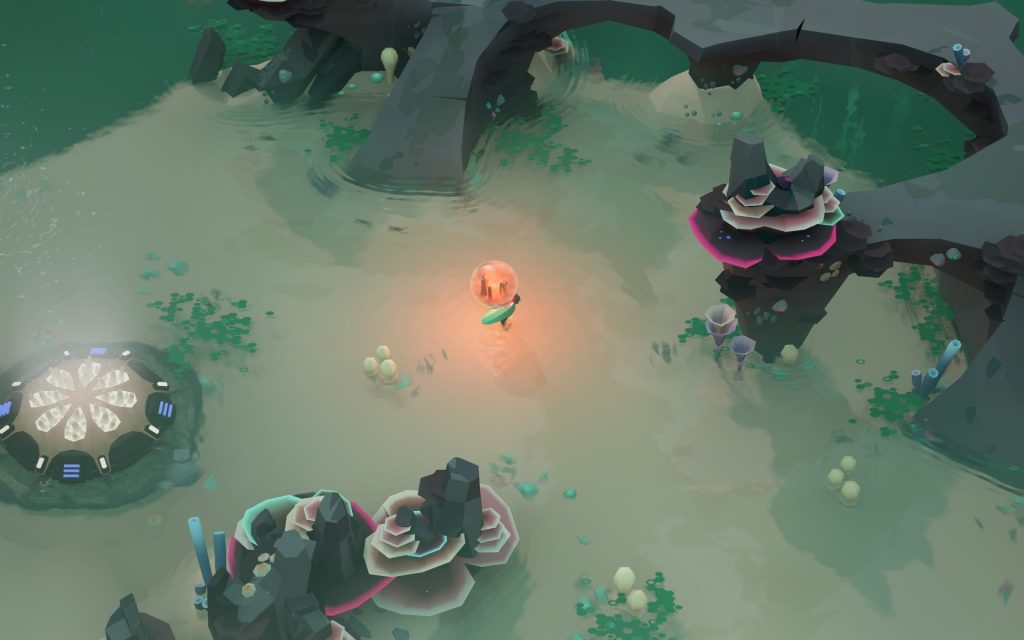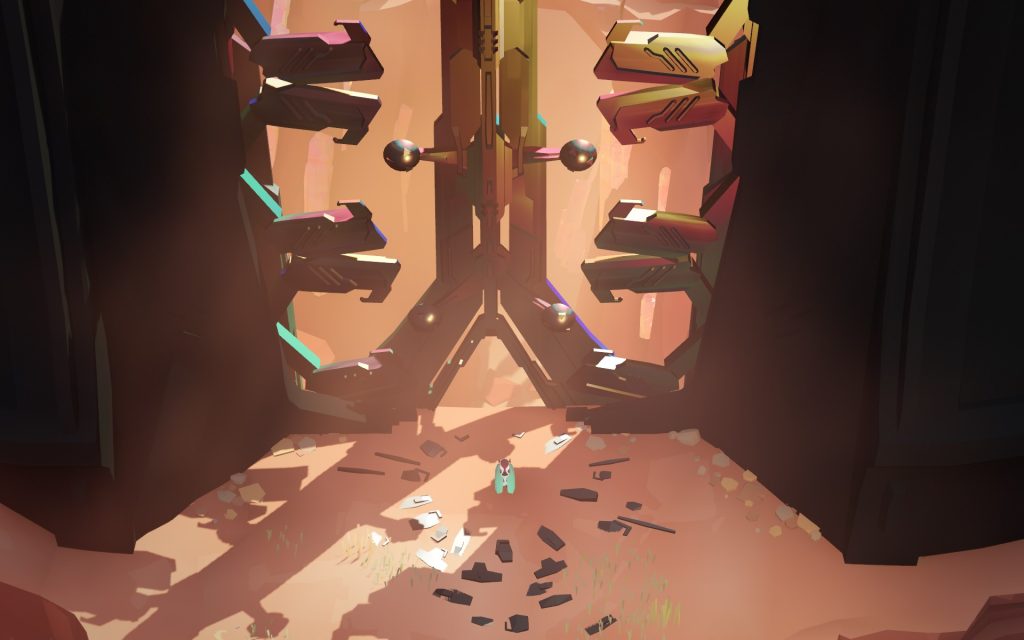
COCOON is the debut title from Geometric Interactive, a studio founded by Playdead's (LIMBO, INSIDE) former lead gameplay designer Jeppe Carlsen and audio designer Jakob Schmid. It's a vibrant and eerie puzzle game delivered in what could be considered Carlsen's preferred style: a wordless adventure driven by a minimalist "one-button" set of actions and heavy use of visual and audio cues.
COCOON's key gameplay element is a collection of orbs that can be carried around by the cicada-like player character as well as entered and exited; each orb is a microcosmic world to be explored and traveled to and from. As its puzzles ramp up, each world orb's unique features and imparted abilities must be used in increasingly elaborate and recursive combinations in order to advance.

Worlds Within Worlds
COCOON's overall approach to puzzle game design is shaped by a commitment to a certain aesthetic continuity. There are no distinctly named or numbered puzzles; no levels, no test chambers, etc. It's one continuous adventure that makes careful use of barriers and transport-style transitions (which bring the character to a new area) to repeatedly divide and contain the explorable space. These closing doors and one-way tickets ensure that there is always a clear boundary in which the puzzle's solution can be found. Director Jeppe Carlsen describes this as a way of building trust between the designer and the player — not only ensuring that the player always has the tools they need, but that they believe that they do. In a game with no words, explanations via design and interaction are critical. Layering them on top of each other and gradually complicating them is what can produce a satisfying sequence of puzzles.
I found the earlier sequences of the game to be overly rote, with most of the puzzle solutions being rather obvious. While the puzzle concepts quickly proved to be compelling it took a fair while before they became especially challenging. The middle and latter parts of the game were brilliant, escalating and intersecting the mechanics in increasingly surprising ways. But by the time I reached the end, I found that I wanted more complexity, and sooner. I longed for one more final act that took the ideas even further, to some impossible-to-imagine crescendo.

But with more consideration, I've begun to wonder if my impression of my own learning curve is sufficient critique. Is it really feasible to extend the concepts further, or to ramp them up more quickly, without leaving me in the lurch on a puzzle that just doesn't click? It's led me to look more closely at the multi-layered nature of puzzle design. The first layer is the logic puzzle and the solution it requires. The second layer is the intended experience of the player seeking that solution: designing for this layer involves careful tuning of the puzzle boundaries, the possibility space, the feedback provided to the players, and the logical leaps expected. The player should often be subtly guided towards something intuitive but surprising and novel, producing the "eureka" moment. I think the shortcoming I perceived was more about some subtlety of puzzle feedback that made me feel unchallenged until later in the game. Puzzle design within puzzle design. Worlds within worlds.
Creepy Crawlies
Key to COCOON's finely-honed structure is aesthetic design that helps convey all these subtleties of puzzle-solving feedback. The game communicates only with visuals and non-verbal sound, so its environments and interactions must be distinct and clear. The worlds it sends the player through hold a variety of forms and textures, dusty, angular, marshy, bulbous, squishy, metallic, desolate. Its numerous ambient creatures and its surprising number of pseudo-vehicular conveyances are all as creative as they are bizarre. The design leans into the alien and uncanny, but is rarely grotesque — an echo of the Giger-esque obsession with bodily mechanism, but with a vibrant and stylized coat of paint. The various worlds each have a color identity that lends coherence and distinction, and certain machines are illuminated by a strange chromatic shifting effect that resembles iridescence.

The spaces and the creatures are bolstered by a dynamic and otherworldly soundtrack and sound design created entirely out of synthetic sounds. Even though many of the thuds and creaks and footsteps sound as if they could have been constructed from recorded foley, the commitment to synthetic sound provides a unifying uncaniness to the soundscape. It's hard to describe the overall effect, but the way that it layers atop COCOON's unbroken string of puzzles (especially its later ones) results in a deeply engrossing experience.
Despite compelling aesthetics, the story told by the adventure leaves a bit to be desired. The promotional materials gesture at a "cosmic mystery" to "unravel", a pitch that promises more substance than the game delivers. It seems to want the player to speculate on the interactions between the little cicada-creature they control, the enigmatic guardians they fight, and the tangle of derelict technology that they explore. But these details ultimately come across as a hero, boss fights, environmental puzzles. The intention to imply history and purpose seems at odds with the intention to convey something wholly alien, only loosely and imperfectly interpret-able. I wish I'd been able to draw more from the "story"; or, that it had led me to a more unique concept than what it reads as on its surface.
Conclusion
COCOON was not a perfect game to me, but it was one with spectacular momentum. The continuous unbroken exploration and the beautiful, unnerving worlds had their hooks in me even before the puzzles particularly challenged me. The level of precision and intention on display, even if undermined by its obtuse storytelling, were unparalleled by almost anything else I played this year. It's a clear example of how imposing limitations (no words, no recorded sounds) can hone and heighten creative work. And while I wish that it had found a way to challenge me further, I'm glad that it lands somewhere approachable, and that it's seen its fair share of praise.